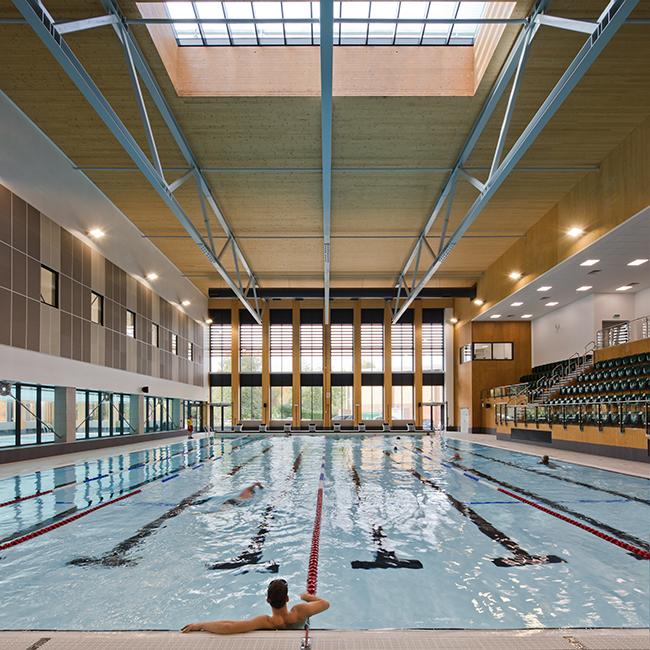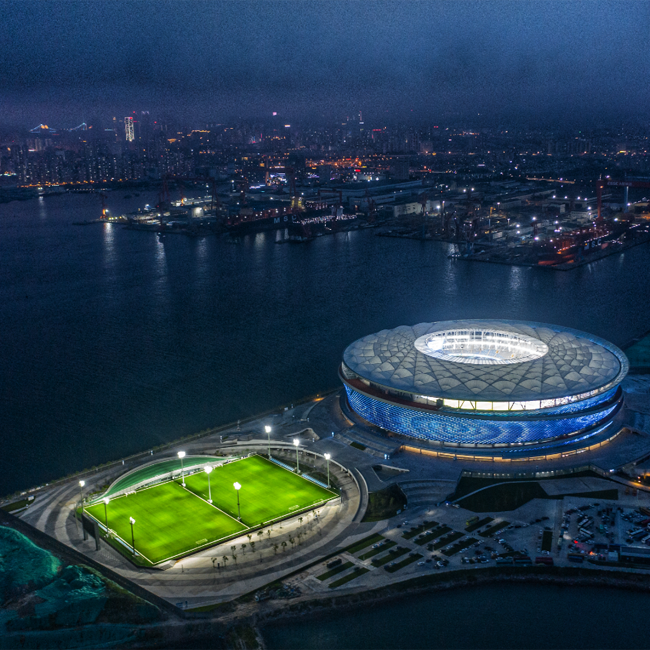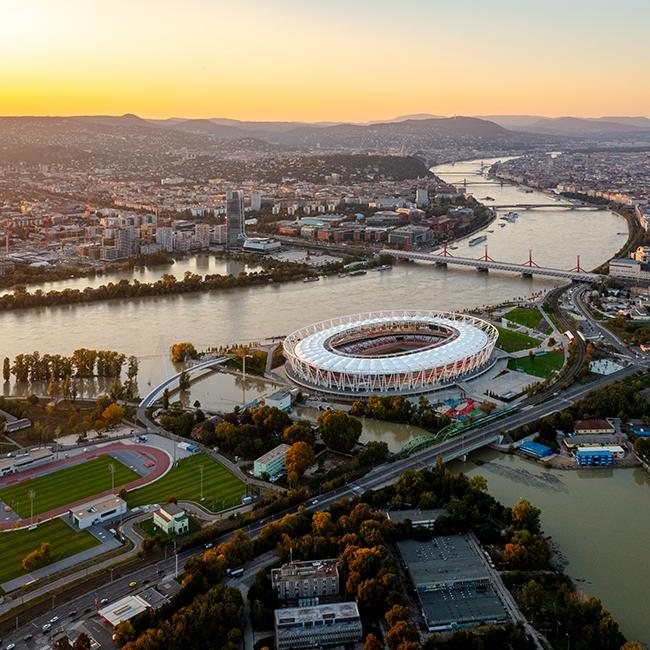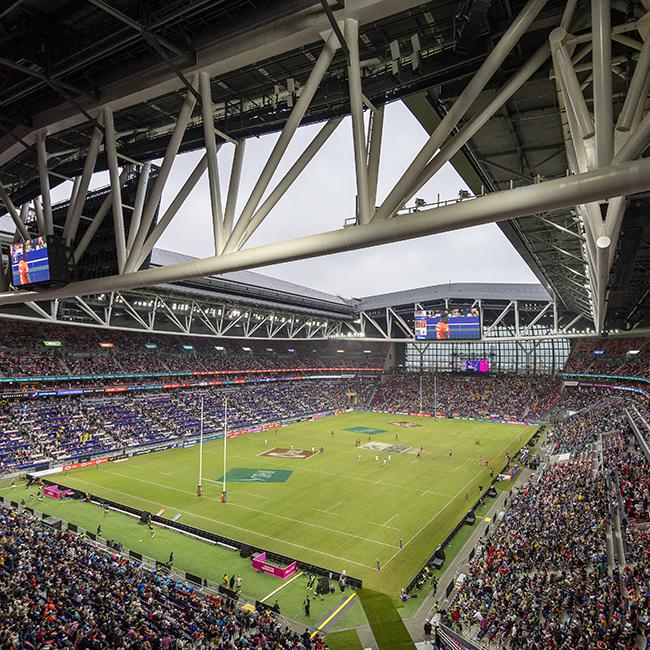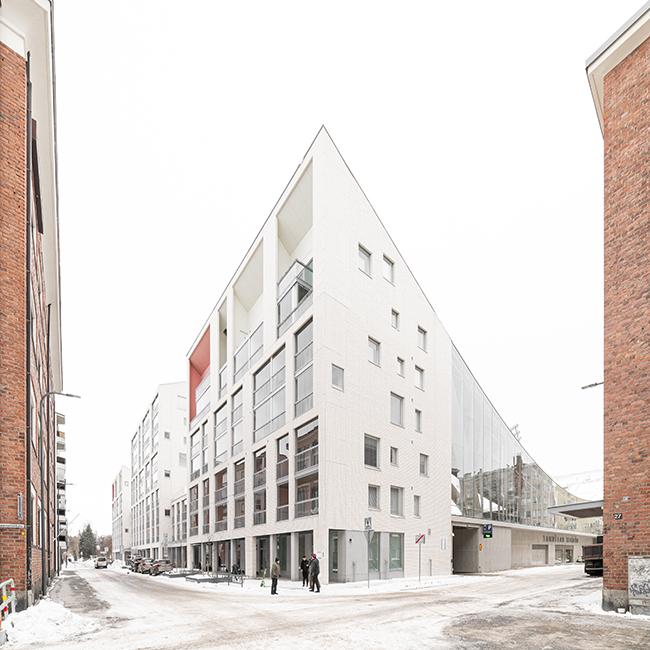Exercise space on all levels
published in sb 1/2021
Dietmar Feichtinger Architectes is implementing the ambitious educational programme of the new open and integrative school in three dimensions. The new secondary school has a strong bias towards sport. As a spacious volume visible on all floors, the sports areas form the spatial and conceptual focus of the square floor plan.
Like all rural communities, Gloggnitz with its population of 6,000 is a municipality that is battling with a dying village centre. In order to strengthen the location, the three previously separate schools (primary school, new secondary school and special needs centre) have been concentrated in an attractive, shared new complex.

photo: David Boureau
School centre’s ground floor symbolises openness
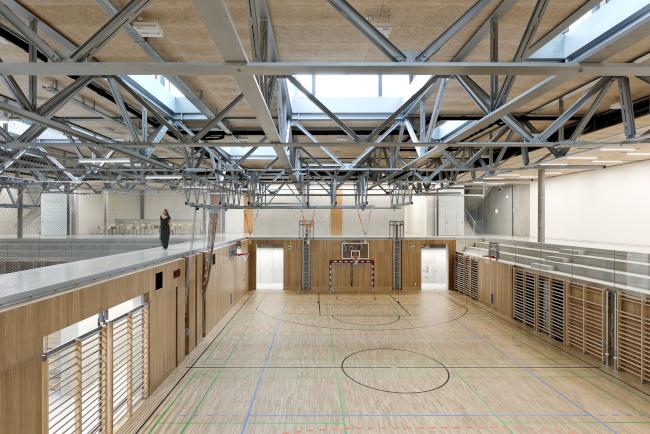
photo: David Boureau
The ground floor is fully glazed and therefore visually permeable inwardly and outwardly. The entrance is located close to the centre in the north-west, overlooking a large public forecourt. The projecting first floor forms a broad canopy, creating a weather-protected entrance zone and drawing inwards those arriving. It marks the transition from the public outdoor area to the interior of the school.
Load-bearing structure
As a spacious, 7.88 m high, visible volume, the spatial and conceptual centre of the square floor plan is formed by the three sports areas. Domed skylights illuminate this open and central space with natural light. Covering it is a filigree, optimised, three-dimensional steel frame with a 30-metre unsupported span.
The rooms adapted to the various activities – the general sports hall, gymnastics hall and climbing wall – extend through all levels from the basement to the roof terrace. The space above them forms the airy centre of the foyer: glass balustrades and fine suspended rope nets as fall protection and ball stop netting create a space that is visually permeable throughout. The sports areas are bordered on two sides by seating stands behind glass balustrades, turning the sports hall, gymnastics hall and climbing wall into a stage.
Good to know
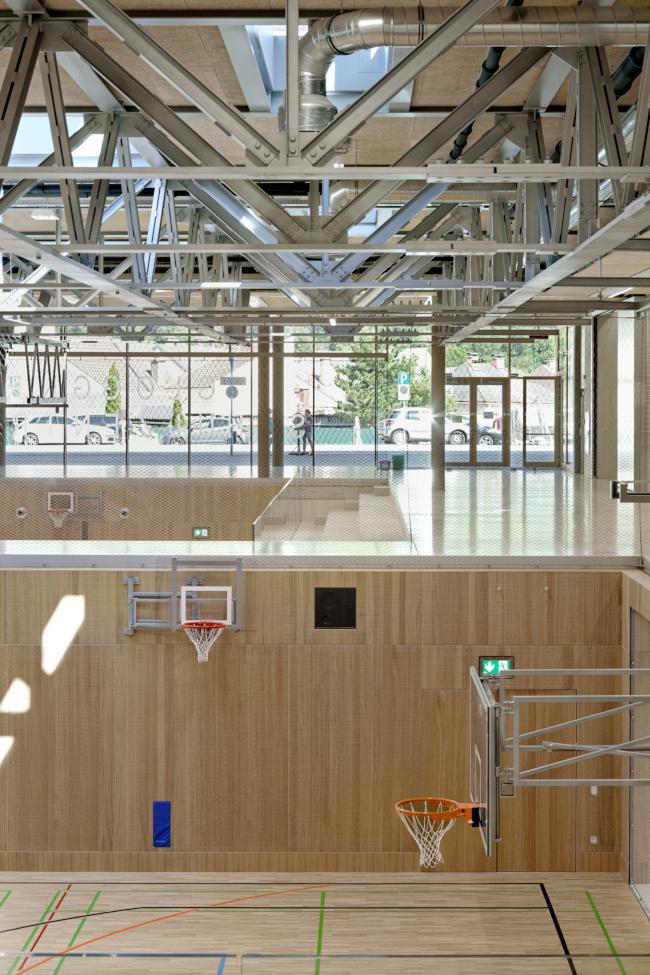
photo: David Boureau
Location
Gloggnitz, Austria
Client/Operator
Municipality of Gloggnitz
Architects
Dietmar Feichtinger Architectes
FR – 93100 Montreuil
www.feichtingerarchitectes.com
Author
Isabella Marboe
Photos
David Boureau and Hertha Hurnaus
Official Opening
August 2019
Construction costs
EUR 20.54 million
Prefer to have your own copy? Or even better: subscribe to the sb magazine - and you receive all six issues per year
Clear and legible structure
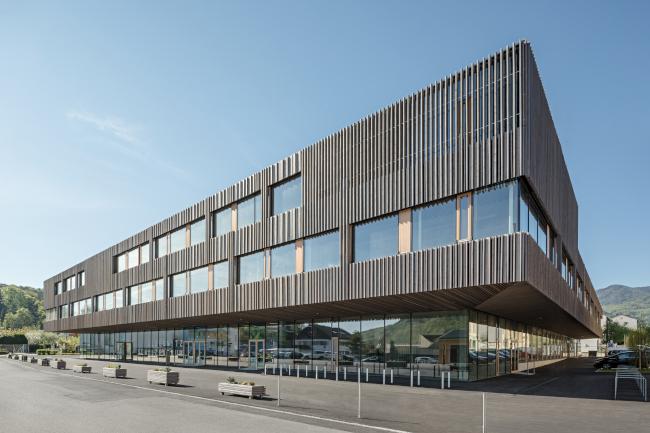
photo: Hertha Hurnaus
The ground floor is the public area: at the entrance there are two cloakrooms, and all special needs and other classrooms are arranged in a ring around the open sports and exercise space and are readily accessible for external use from the foyer or the side entrances.
All classrooms of the three school types are located on a common level on the first floor, arranged around the wooden roof terrace with prism-shaped lantern skylights above the sports space. These articulate this large, shared open space for all, which can also be used as an “outdoor classroom”. Around this open courtyard, the school centre is organised on the cluster principle: classrooms that can be opened up are grouped around a so-called “market place”, which merges into the open circulation zone. In this way lessons can take place in an open space situation involving several classes. All areas thus become the setting for shared learning and interaction across school types.
Rooms flooded with natural light

photo: David Boureau
The central air space is illuminated via glass elements integrated into the structures on the terrace. Alternatively, illumination is achieved from above via the glazed decking and the side glazing. The side glazing permits sight lines between the terrace on the first floor and the sports rooms on the first basement floor.
Ventilation
During lessons, the classrooms are mainly supplied with natural fresh air via automatically controlled window sashes. Their regulation is based on constantly measured CO2 values in the classrooms and thus ensures efficient, energy-saving, natural ventilation.
During the breaks and overnight, “shock ventilation” is carried out for a rapid air change. Three vents per classroom are integrated into the façade. Used air is extracted in the equipment rooms of the sports halls. Sound-insulated overflow elements in the classroom walls and the permanently open stairwells create a defined ventilation route.

